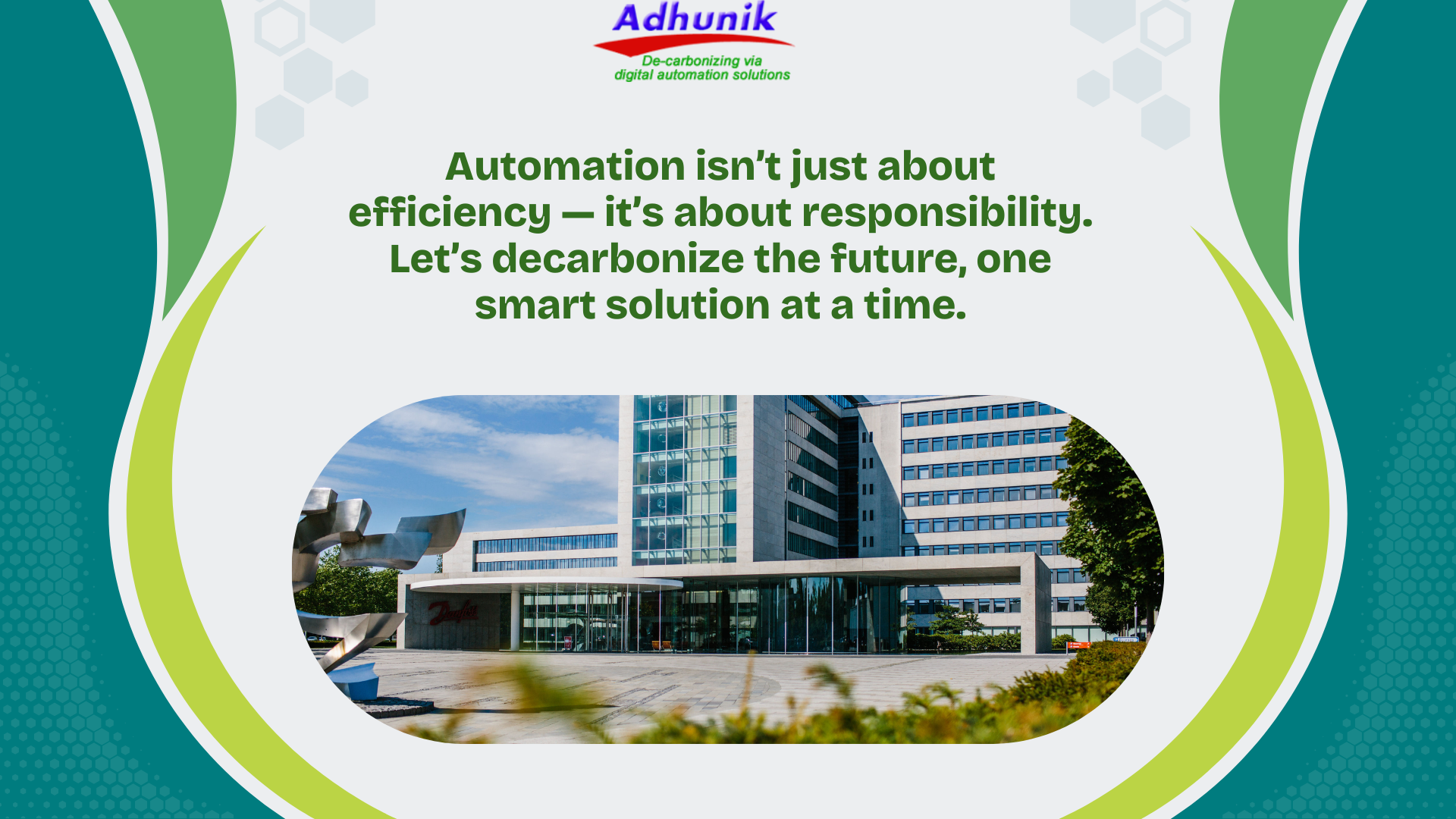Automation Isn’t Just About Efficiency — It’s About Responsibility ????⚙️

In an era where sustainability is not just a trend but a necessity, automation is emerging as more than just a tool for boosting productivity — it’s becoming a powerful agent of change. Traditionally, automation has been synonymous with efficiency: reducing labor costs, increasing output, and streamlining operations. But in today’s world, where climate change, resource scarcity, and environmental degradation are pressing global concerns, the role of automation must be redefined.
It’s not just about doing things faster or cheaper. It’s about doing them better — for the planet, for people, and for the future.
Why Responsibility Matters in Automation
Efficiency in automation often refers to economic gain — saving time, money, and effort. However, responsibility adds a new layer of purpose. Responsible automation involves designing systems and solutions that minimize environmental impact, use resources wisely, and align with broader sustainability goals.
As global carbon emissions continue to climb, industries are being called upon to rethink their operations. Here’s where automation steps in — not as a replacement for human effort, but as a partner in building a cleaner, smarter, and more resilient world.
Smart Solutions = Sustainable Solutions
Every smart solution counts.
Automation technologies such as Artificial Intelligence (AI), Internet of Things (IoT), and Machine Learning are being integrated into systems that monitor, optimize, and regulate energy consumption. These aren’t just incremental improvements — they’re transformational.
Take smart HVAC systems, for example. Traditional heating and cooling systems often run at fixed speeds, consuming energy regardless of actual demand. In contrast, automated HVAC systems equipped with variable frequency drives (VFDs), sensors, and intelligent controls adjust output in real-time. They provide optimal comfort while minimizing energy use, significantly reducing a building’s carbon footprint.
In industrial settings, automated drives and controls help regulate motor speeds and reduce energy consumption, often by 30-50%. In manufacturing, real-time monitoring systems help prevent equipment overuse, reduce waste, and support predictive maintenance — preventing unnecessary energy usage and costly downtime.
These are not just improvements in performance; they are commitments to sustainability.
Decarbonization: A Shared Responsibility
Decarbonization — the reduction of carbon dioxide emissions — is no longer a future goal; it’s an urgent priority. Nations, corporations, and individuals are being urged to reduce their carbon footprints, and automation is central to making that shift feasible and scalable.
With the help of automation:
-
Factories are running on optimized schedules, minimizing idle time and energy waste.
-
Smart grids are distributing electricity more efficiently, incorporating renewable energy sources more effectively.
-
Buildings are becoming “intelligent” ecosystems that self-regulate lighting, HVAC, and power systems based on occupancy and usage data.
-
Supply chains are gaining visibility, reducing unnecessary transportation and optimizing logistics.
These efforts converge to form a cohesive movement: decarbonizing the future, one smart solution at a time.
The Role of Industry Leaders
Companies like Danfoss, a global leader in energy-efficient technologies, are paving the way by providing smart automation solutions across HVAC, refrigeration, drives, and industrial automation. Their solutions focus on reducing emissions and enhancing system efficiency across a wide range of industries.
But beyond providing the tools, industry leaders have a responsibility to educate, advocate, and lead by example. Every product launched, every system installed, and every project completed should move the needle closer to sustainability.
It’s not just about selling automation products. It’s about promoting a culture of responsibility and innovation. It’s about inspiring others to see that intelligent automation can — and should — be a force for good.
A Greener Planet Through Intelligent Automation 
So, what does a responsible approach to automation look like?
-
It means choosing systems that align with environmental standards and support sustainable outcomes.
-
It involves using data not just to measure performance but to forecast energy needs and eliminate waste.
-
It requires collaboration between engineers, designers, facility managers, and decision-makers to embed sustainability into every project.
Responsibility in automation is not a box to check. It’s a mindset. It’s a commitment to continuous improvement and long-term thinking. And it’s a belief that technology, when used wisely, can solve some of the world’s most pressing challenges.
Conclusion: Shaping a Better Tomorrow
The conversation around automation is evolving. It’s no longer enough to focus solely on what automation can do for businesses — we must also consider what it can do for the planet.
From smarter HVAC systems in commercial buildings to energy-efficient drives in factories, every automation decision has the potential to impact the environment positively. The future isn’t automated simply for speed or cost-effectiveness — it’s automated for sustainability, resilience, and global well-being.
Let’s decarbonize the future, one smart solution at a time. 


The responsibility is ours. The technology is here. And the time to act is now.


